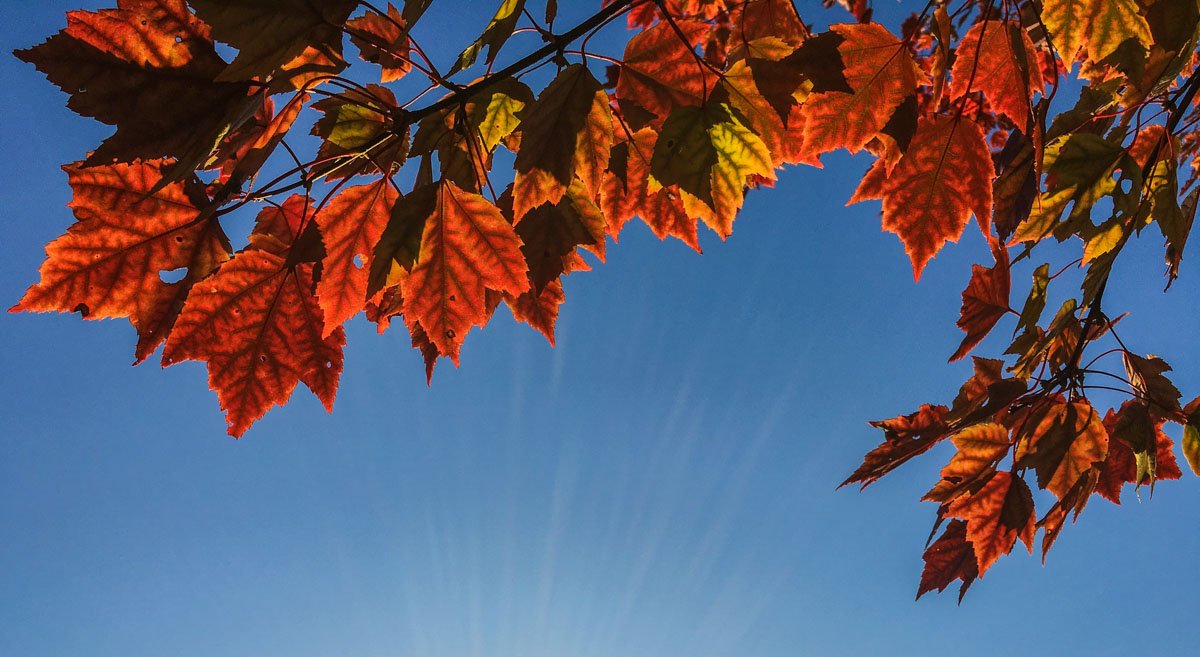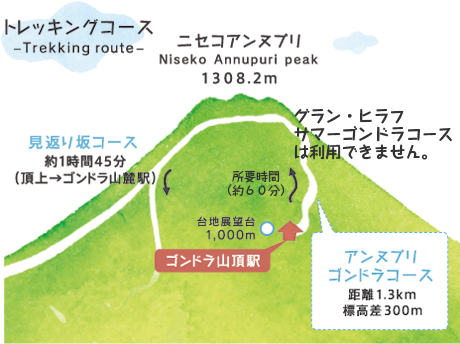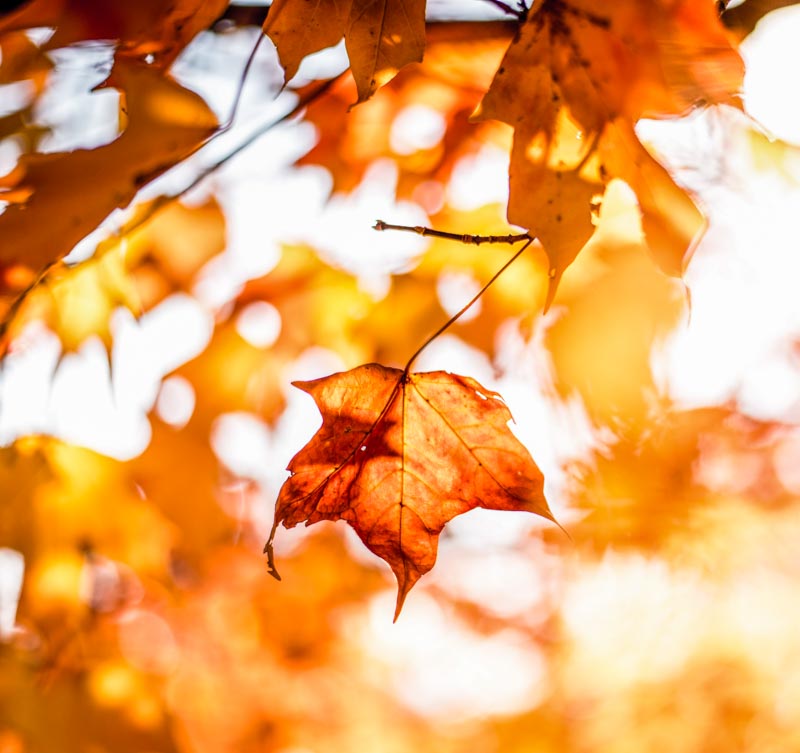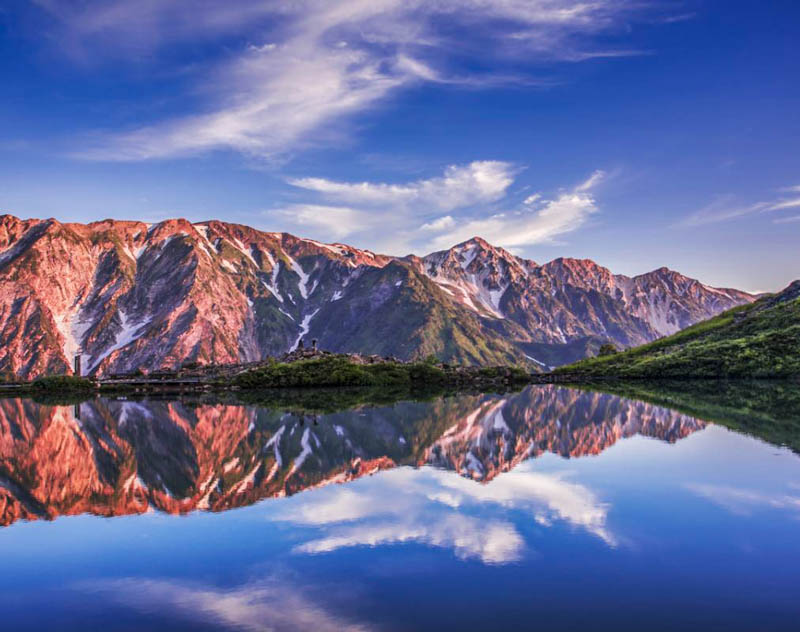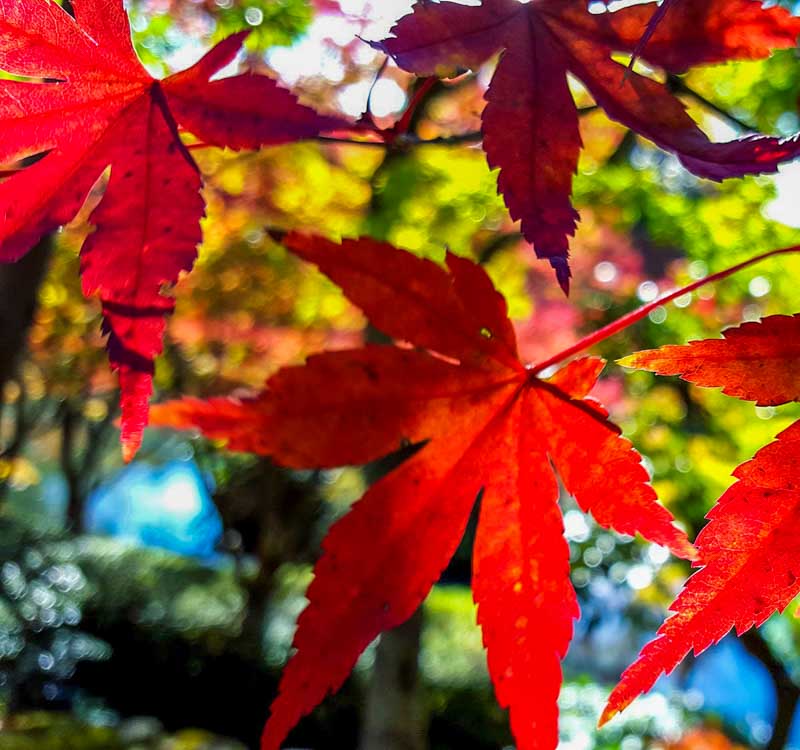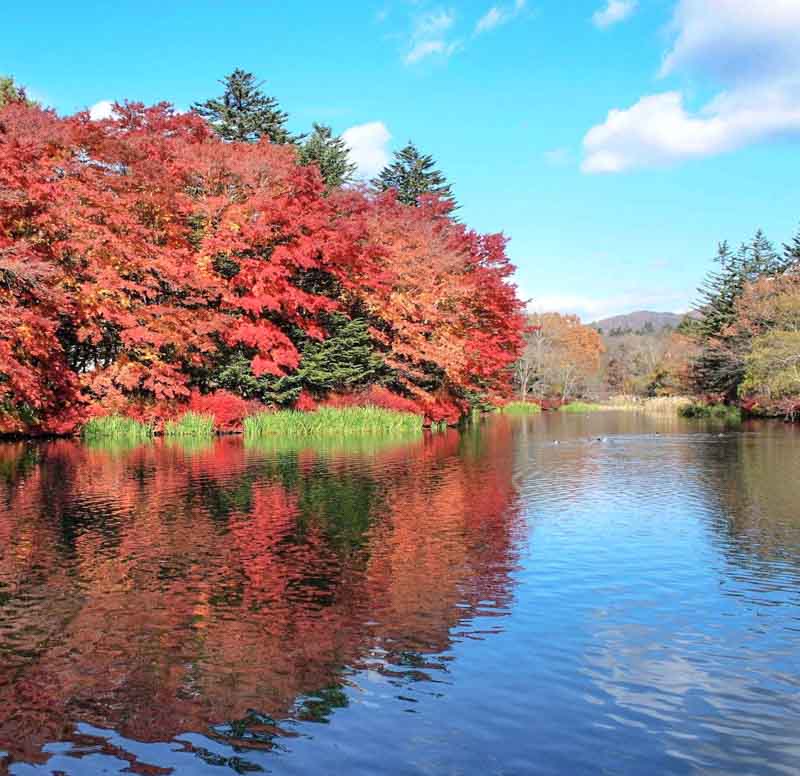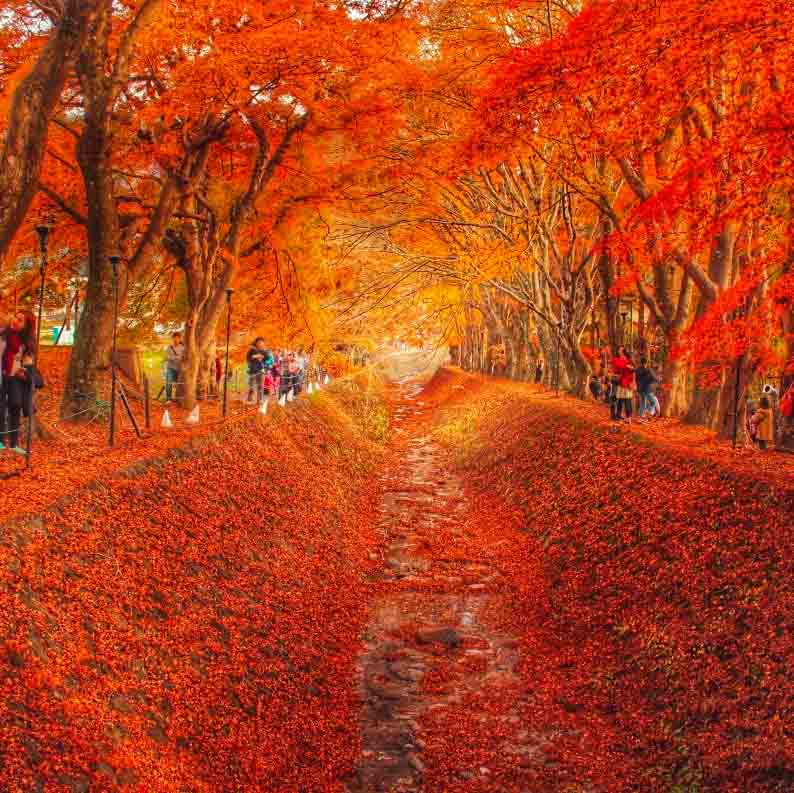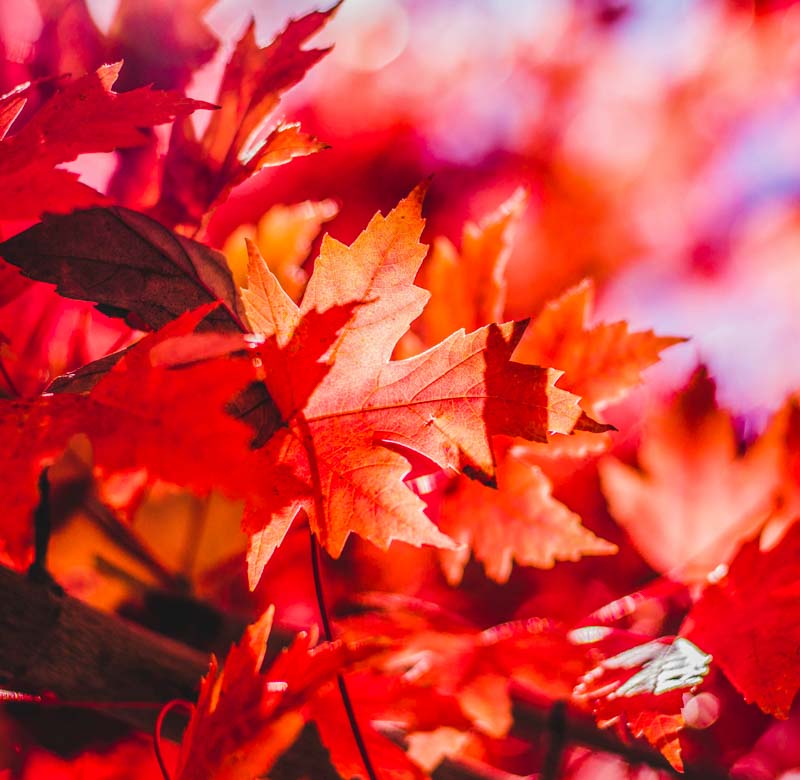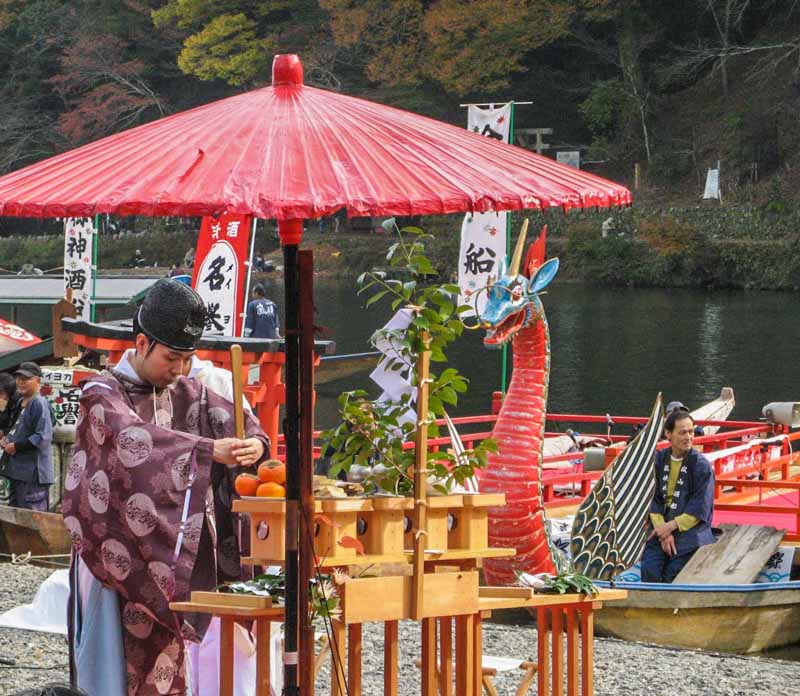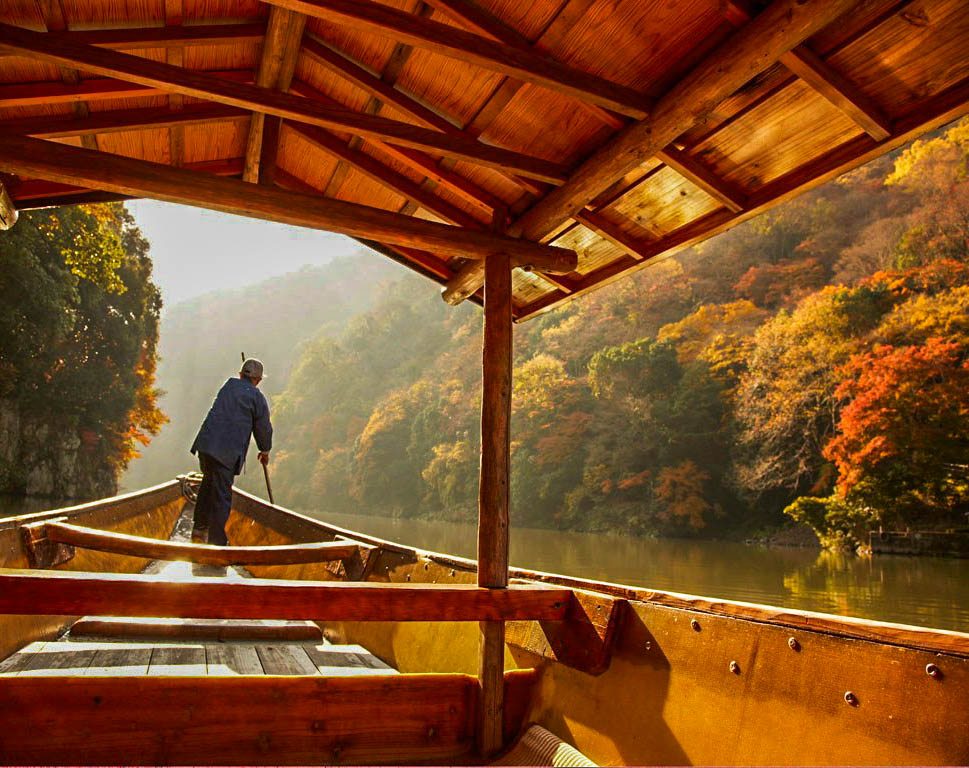Japan’s autumn begins when momiji begins to show, first on the northern island of Hokkaido in September, slowly meandering down the length of the nation.
Depending on where (and the altitude) you are, the foliage can last from September through late November. As fall colors adorn temples and shrines, and mountains and gorges across the country, if there is a particular area of Japan you plan to visit this fall, make sure to plan your trip around respective foliage forecasts!
Niseko, Hokkaido
Mid October
The window during which the vegetation in Niseko changes color is just 2 weeks.
Hiking is the most rewarding way to see the colorful leaves in the mountains. Actually, many people come to Niseko just for the mountains and the hiking on Mount Yotei and Annupuri every year.
Annupuri is good for day outings – there are 4 main climbing routes. One is via the summer gondola that depart from the Hirafu Mountain center, the trekking features educationaly display boards in the forest.
You may also take the summer gondola from Niseko Annupuri International Ski Area at start trekking at a higher point to the top of Annupuri (or just stop at the vieweing platform and take in the magnificent panorama.
The views across the valley towards Mt. Yotei are nothing short of magical).
Or for those who prefer to trek from the base all the way to the submit, access the trails from the Goshiki Onsen campsite.
Goryu and Happo, Hakuba, Nagano
Mid to late October
Goryu and Happo area, being home to one of Japan’s largest ski resorts, boasts breathtaking views of Hakuba’s huge mountain range, the Northern Alps.
Comes fall time, the leaves turn a vibrant mix of mixed yellow, orange and red.
On a clear day at sunrise, you’d be totally transfixed by the blissful scene viewed from the Hakuba Goryu Tele-Cabin at 1500m above sea level, overlooking Mount Goryu and Mount Shirouma.
Relaxed trekker staying near Happo One would want to check out the beginner trail that starts at Kurobishidaira at 1700m. 3 hours’ walk enjoying views of the Shirouma Three Mountains, will you to the famous viewing platform at Happo Pond.
If a hiking trip sounds too much, take a stroll in the Tsugaike Nature Park, which stretches on the side of Mount Norikura overlooking the Shirouma Three Mountains. In October, leaves at the upper part of the hills turn red while the lower part is still green, while the Shirouma Three Mountains in the distance starts receiving snow fall.
It is a photographer’s dream.
Karuizawa, Nagano
Mid October to early November
Fall time comes early in Karuizawa, a mountain resort town an hour from central Tokyo, which is at an altitude of 1000m on average. Starting mid October, visitors flock to the lake and pond sides for momiji viewing.
One popular spot for the activity is Kumobaike Pond (雲場池, nicknamed “Swan Lake”).
Maple trees first redden in October, and they are soon joined by the larch trees later in Novermber, complimented with moving pampas grass, and bright red dodan-tsutsuji shrubs for a picture-perfect scene.
As a secluded moutainside ryokan resort with natural hot springs, Hoshinoya Karuizawa features riverside terraces, offering breathtaking views of the surrounding forests through the seasons from the privacy of your own residence.
Fuji-Goko (Fuji 5 lakes), Yamanashi
Through November
Accessible from the metropolitan area as a day trip, Fuji-Goko area comprises five pristine lakes that surround Mount Fuji: namely lakes Kawaguchiko, Saiko, Yamanakako, Shojiko and Motosuko, providing the best vantage points to admire verdant forests that cover the majastic mountain.
Among the lakes, Lake Kawaguchikois the most accessible via public transport and developed for foreign tourists, being home to golf courses, muesums, cafes, restaurants and tensui onsen, plus a tourist information center.
This is also where epic hikes up to Hakusandake commence.
A five-minute drive from Hoshinoya Fuji is the iconic Maple Corridor (the Momiji Kairo), a 200m canal lined by dozens of maple trees that lights up every night.
It is next to the lakeside promenade where the Fujikawaguchiko Autumn Leaves Festival takes place from 11 to 23 November. A festive bazaar of street vendors, featuring local food and drinks, local produces, arts and crafts light up the area. Complimented with an interesting showcase of mini traditional village replicas.
It is a very good time to be in Kawaguchiko.
If you are going: Hoshinoya Fuji surrounds Lake Kawaguchi, featuring 40 minimal cabins that frame the vivid scenery of rich red leaves on the mountain, and the “upside down Fuji” reflected on the lake.
Arashiyama, Kyoto
Mid to late November
The mountains in Arashiyama is long beloved for stunning natural scenery and tranquility, even more so as the vegetation turns an impressive mix of reds and yellows in November.
Arashiyama Momiji Matsuri [嵐山紅葉祭り], or the Maple Festival, takes place at the Togetsu-kyo Bridge.
The area has been a popular destination since the Heian Period when nobles and elite would visit to appreciate red maple leaves.
A highlight of the festival is the reenactment of the Kyoto Heian court with traditional performances and events: locals dress in 10th century court costumes, and perform traditional dance, music and plays on boats, which sail on the Oi River, followed with an open-air tea ceremony.
If you are going: 100-year-old ryokan Hoshinoya Kyoto is a cypress pole boat ride along the Ooi River away, hidden in the hills of Arashiyama Mountain just a 30-minute subway ride from Kyoto Station.
Once a retreat for the Imperial aristocracy, Arashiyama offers such seasonal delights as cherry blossoms in the spring, lush greenery in the summer, red maple leaves in the fall, and waterfowl in the winter. All these sights can be taken in from the comfort of your rooms.

 English
English

